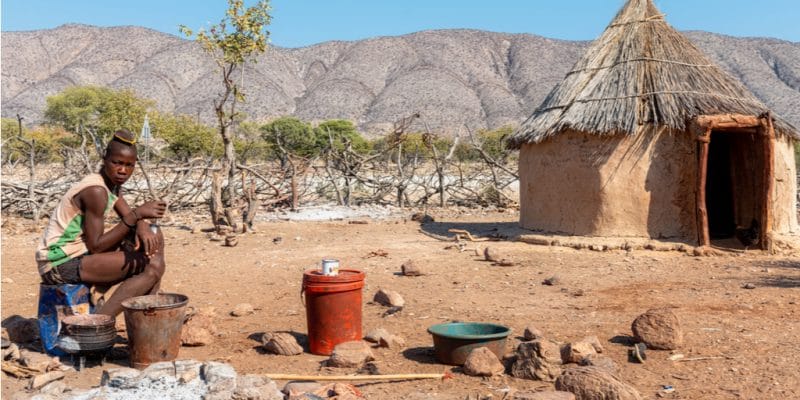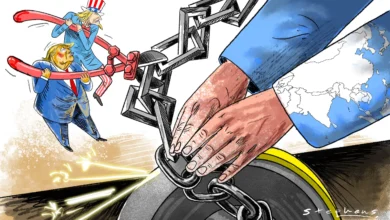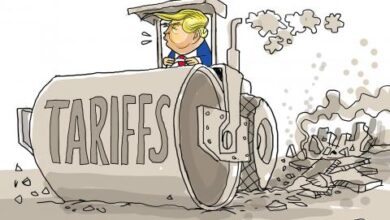Namibia Caught Between Severe Drought And Resulting Food Crises Plans To Cull Hundreds Of Wild Animals; Climate Change In 2023 Set New Records, Is Earth Dying A Slow Death Because Of Our Actions?
Namibia is a country known for its rugged beauty and diverse wildlife but sadly today it is facing one of the most severe droughts in recent history throwing the nation into a deep food crisis. The Namibian govt has hence, taken a sad decision to cull hundreds of wild animals to counter its growing hunger crisis. However, this decision has ignited major criticism from conservationists and wildlife groups across Africa, sparking intense debate over its efficacy and potential long-term consequences for both the environment and the country's already fragile ecosystems. At the same time, experts have also cautioned that such actions could inadvertently increase the risk of spreading highly contagious zoonotic diseases.
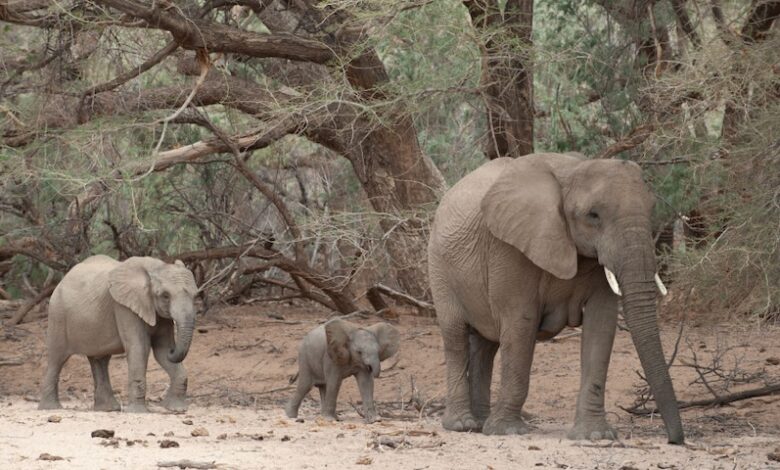
Namibia is currently facing one of the most severe droughts in its history, the crisis has not only taken the livelihoods of millions but also deepened a food crisis that has left many communities struggling to survive.
The Severity of the Drought
While Namibia’s climate has always been harsh, with arid and semi-arid conditions across much of the country recent years have seen a significant worsening of these conditions due to prolonged periods of below-average rainfall.
The current drought, which has lasted for several years, has destroyed agriculture which is the backbone of Namibia’s economy and the primary source of livelihood for many rural communities.
Across the country with water sources drying up, and the lack of rain leading to crop failures has not only reduced food production but also severely affected livestock, as grazing land has become increasingly scarce.
Namibia relies heavily on subsistence farming, and the failure of crops such as maize, millet, and sorghum has left many families without sufficient food. The situation is particularly critical in rural areas, where communities are more dependent on agriculture for their daily sustenance.
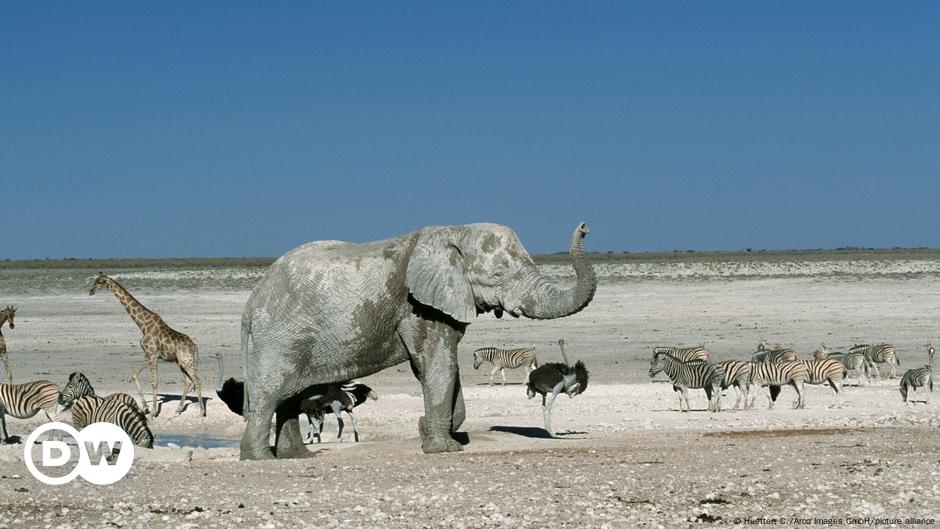
The Controversial Plan
The Namibian govt in order to combat the food crises announced a controversial plan on August 29 to cull 723 wild animals, including 83 elephants, hippos, buffaloes, impalas, wildebeests, and zebras, to feed the starving population.
However, the decision has sparked criticism from wildlife conservationists and nature enthusiasts, who argue that it overlooks the root causes of drought and food insecurity and could potentially disrupt wildlife breeding patterns.
In a gripping documentary aired on Namibian television on the same day, viewers were confronted with the dark reality of hunger in the drought-stricken village of Omulangi.
Malnourished villagers were shown walking rugged terrain, desperately searching for food and water, the once-vibrant land is now dotted with livestock carcasses, painting a grim picture of the devastating effects of the drought.
Culling Of Wild Animals For Food
Desperate times call for desperate measures, Romeo Muyunda, spokesperson for Namibia’s Ministry of Environment and Tourism, defended the decision to cull wildlife, stating, “This is not a decision we made lightly; it is driven by necessity. Our country is experiencing severe drought, and our priority is to help those facing food shortages.”
Muyunda explained that the culling is part of a broader strategy to alleviate food shortages and reduce the risk of human-wildlife conflict. “These animals are competing with humans for dwindling resources. By reducing their numbers, we can ease the pressure on people and the environment,” he added.
The Namibian government has emphasized that reducing elephant populations is necessary to mitigate human-wildlife conflicts aggravated by the drought.
“With the severe drought, conflicts are expected to increase if no interventions are made. To this effect, 83 elephants from identified conflict areas will be culled, with the meat allocated to the drought relief program under the Office of the Prime Minister,” the government stated.
The culling is intended to reduce the adverse impacts of drought on wildlife conservation in national parks and protected areas. “This will help manage the current grazing pressure and water availability by reducing wildlife numbers in areas where they exceed the available resources,” the statement added.
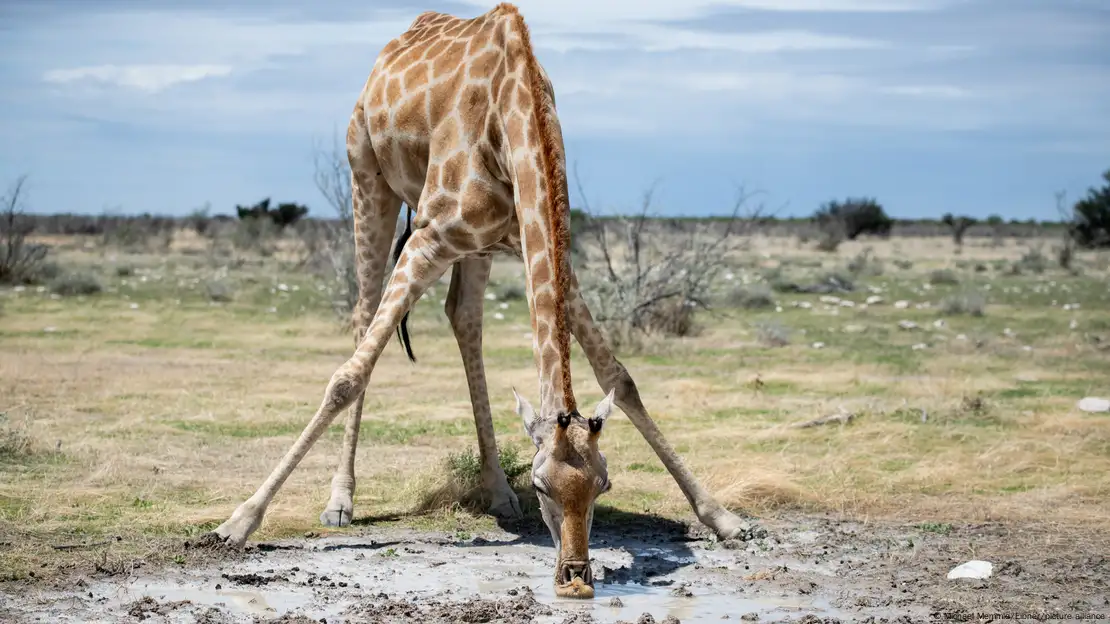
Criticism And Conservation Concerns
However, wildlife groups across East and Southern Africa have strongly condemned Namibia’s decision to proceed with mass wildlife culling, questioning its rationale and potential consequences.
“This is a tragic and short-sighted approach,” stated Emmanuel Kankara, an activist with the Namibian Wildlife Conservation Trust. “Killing wild animals will not solve the problem of food insecurity in this country. It will only disrupt ecosystems and endanger species that are already vulnerable.”
Arafat Mtui, a wildlife conservationist with the Southern Tanzania Elephant Program, echoed these concerns.
“The impact of this culling could be extensive. Wildlife plays a crucial role in maintaining ecological balance. Killing such a large number of animals could have severe consequences for biodiversity,” he warned.
Mtui urged Namibian authorities to seek sustainable solutions instead of resorting to temporary measures that might lead to significant ecological losses.

The Roots of Namibia’s Hunger Crisis
Namibia is currently experiencing its most severe drought in decades. Data from the Namibia Meteorological Service reveals a 30 percent decrease in annual rainfall over the past decade. This prolonged dry spell has drastically affected the country’s water resources and agriculture, intensifying its food insecurity.
The Ministry of Agriculture, Water, and Land Reform’s July 2023 Crop Prospects, Food Security, and Drought Situation Report indicates that the total cereal production for 2022-23 was 153,000 metric tonnes, a decrease from the previous season’s 168,200 metric tonnes.
Notably, 81 percent of this production came from the commercial sector, with only 19 percent from crop production regions—a nine percent drop from the previous season.
The report also highlighted a severe decline in food security due to adverse agricultural conditions during the 2022-23 season. Thousands of farmers are struggling with crop failures, severely impacting their ability to replenish food reserves.
Households in major crop-producing regions have reported significant losses of their previous harvests and now rely heavily on market purchases and drought-relief measures.
Samuel Wangwe, a principal research associate at the Tanzania-based Economic and Social Research Foundation (ESRF), offered a broader economic perspective on the situation in Namibia.
“Culling wildlife to address immediate hunger may have long-term economic repercussions,” Wangwe noted. “The loss of wildlife impacts tourism, a vital sector for Namibia’s economy. This situation underlines the urgent need for sustainable agricultural practices and better drought management strategies.”
Wangwe emphasized the importance of enhancing agricultural resilience and improving water management. “While culling may provide short-term relief, it’s essential to invest in long-term solutions that will mitigate the effects of future droughts and protect Namibia’s natural resources,”
Culling During Election Season
The timing of the decision to cull wildlife, just ahead of the upcoming November elections, has led to speculation that the move is politically motivated, aimed at gaining support in rural areas like Kavango and Caprivi, where the ruling party faces challenges.
“This isn’t about feeding people; it’s about winning votes,” said Edgar Toivo, a conservationist. “The government’s focus on these key regions, known for their electoral significance, raises concerns about the true motive behind the cull.”
Critics have also questioned the government’s approach to addressing food shortages, with experts suggesting that culling livestock—not elephants—would be a more practical and sustainable solution.
“Elephants are better adapted to survive droughts than livestock,” explained Justin Ndlovu, an agricultural expert in Namibia. “If the government were serious about helping farmers, they would implement a livestock purchase program instead of culling wild animals,” Ndlovu added.
Implications for the Rest of Africa
The proposed wildlife culling in Namibia could have significant implications beyond its borders, with conservationists warning that it might set a dangerous precedent for other African nations.
There is concern that allowing this cull could encourage governments across the continent to exploit wildlife under the pretext of humanitarian relief.
“If Namibia gets away with this, what’s to stop other countries from doing the same?” questioned Ndlovu.
The environmental impact of the cull is another major concern, particularly for species like Namibia’s desert-adapted elephants.
“These elephants are critical to the ecosystem, and their loss would be devastating,” said Matana Ng’weli, a wildlife scientist specializing in elephant conservation at the Tanzania Wildlife Research Institute.
The cull could disrupt not only elephant populations but also other species such as lions, leopards, and vultures that depend on the balance of the ecosystem.
Amid the ongoing debate over wildlife culling for human consumption, experts have cautioned that such actions could inadvertently increase the risk of spreading highly contagious zoonotic diseases.
“Culling wildlife might seem like a straightforward solution, but it poses significant risks,” said Mtui. “Handling and processing these animals can create opportunities for pathogens to jump from animals to humans.”
Mtui further explained, “The stress and environmental disruption caused by culling can heighten the risk of zoonotic diseases spilling over into human communities. It’s crucial to consider these potential consequences before implementing such measures.”

Climate Change, 2023 Sets Multiple New Records for Drought
The year 2023 has seen climate change accelerate, with multiple new records set for drought.
According to the State of the Climate in 2023 report by the National Oceanic and Atmospheric Administration (NOAA), nearly 8% of the global land area was under extreme drought in July 2023, surpassing the previous record of 6.2% set in July 2022.
Globally, 29.7% of land experienced moderate or worse categories of drought in 2023, another record-breaking figure. Additionally, greenhouse gas concentrations, global temperatures across land and ocean, global sea levels, and ocean heat content all reached new record highs in 2023.
“This report presents a startling, yet well-established picture: We are experiencing a warming world, and the indicators and impacts are evident across the planet,” said Derek Arndt, director at the National Centers for Environmental Information, NOAA.
The annual global surface temperature in 2023 was 0.55 to 0.60 degrees Celsius above the 1991–2020 average, making it the warmest year since records began in the mid-to-late 1800s.
The major greenhouse gases — carbon dioxide, methane, and nitrous oxide — continued to rise, reaching record levels in 2023.
The global ocean heat content up to a depth of 2,000 meters also hit new record highs, and the global mean sea level reached over 10 centimeters above the 1993 average, marking a record high for the 12th consecutive year.
Mexico experienced its driest and hottest year on record in 2023, with data tracking back to 1950. Regions like West Asia, Europe, and South America also registered high levels on the drought severity index, which assesses long-term meteorological drought conditions.
South America, for instance, endured severe drought in the latter half of the year, particularly in the Amazon Basin. The Rio Negro in Manaus, Brazil, a key tributary of the Amazon River, reached its lowest level since records began in 1902.
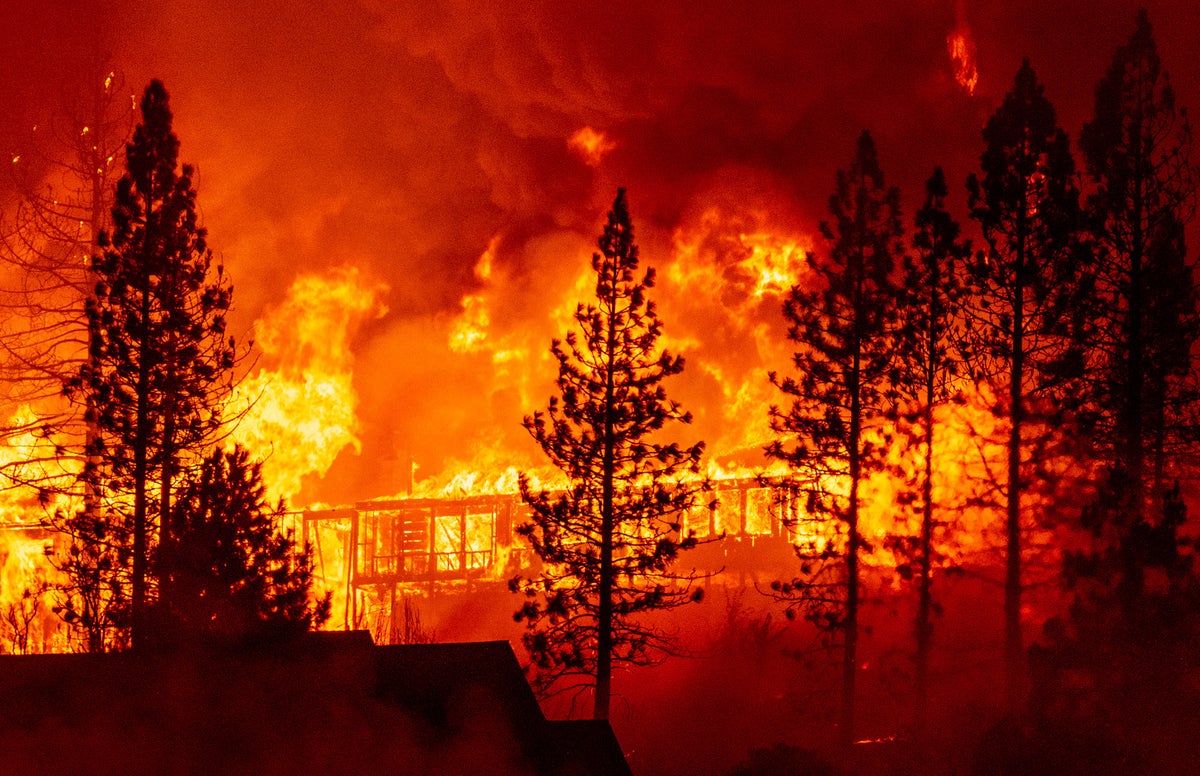
These prolonged hot and dry conditions created an environment ripe for wildfires.
Canada experienced its worst wildfire season on record in 2023, with large-scale fires burning continuously from May to September. The burned area spanned approximately 15 million hectares, more than double the previous record set in 1989.
Greece also faced unprecedented wildfires, with the total area burned in 2023 being more than four times the long-term average, according to reports.
In Australia, the period from August to October 2023 marked the driest three-month span in the country’s 104-year record. Millions of hectares were consumed by bushfires that raged for weeks in the Northern Territory.
At the poles, 2023 was the fourth-warmest year on record in the Arctic in the past 124 years. Over half of the monitoring sites in the region recorded the highest below-ground permafrost temperatures ever.
Thawing permafrost not only threatens infrastructure but also accelerates the release of greenhouse gases into the atmosphere, potentially intensifying global warming.
The seasonal Arctic sea ice, which typically reaches its minimum extent in September, recorded the fifth-smallest extent in the 45-year record.
In the Antarctic, sea ice extent and area hit new record lows in eight different months of the year.
On February 21, 2023, the Antarctic sea ice extent and area reached all-time record lows, surpassing the previous records set in February 2022.
Tropical cyclone activity in 2023 was below average, with 82 named tropical storms compared to the 87 observed on average between 1991 and 2020.
However, some storms still broke records globally, with over seven tropical cyclones reaching Category 5. The accumulated cyclone energy — a measure combining the strength, frequency, and duration of tropical storms and hurricanes — was above average in 2023
The Viewpoint, Is It Time For Payback?
Human actions over the past century have deeply altered the planet’s natural systems, setting the stage for the climate crisis we now face.
Our relentless pursuit of industrialization, economic growth, and resource exploitation has led to unprecedented levels of greenhouse gas emissions, deforestation, and environmental degradation.
The consequences of these actions are becoming increasingly evident, as we witness more frequent and severe weather events, rising global temperatures, and the degradation of ecosystems that once thrived.
The Industrial Revolution marked the beginning of humanity’s large-scale impact on the environment. The burning of fossil fuels — coal, oil, and natural gas — has released vast amounts of carbon dioxide and other greenhouse gases into the atmosphere.
These gases trap heat, leading to a warming planet, as temperatures rise, the delicate balance of our ecosystems is disrupted, leading to the melting of polar ice caps, rising sea levels, and the bleaching of coral reefs.
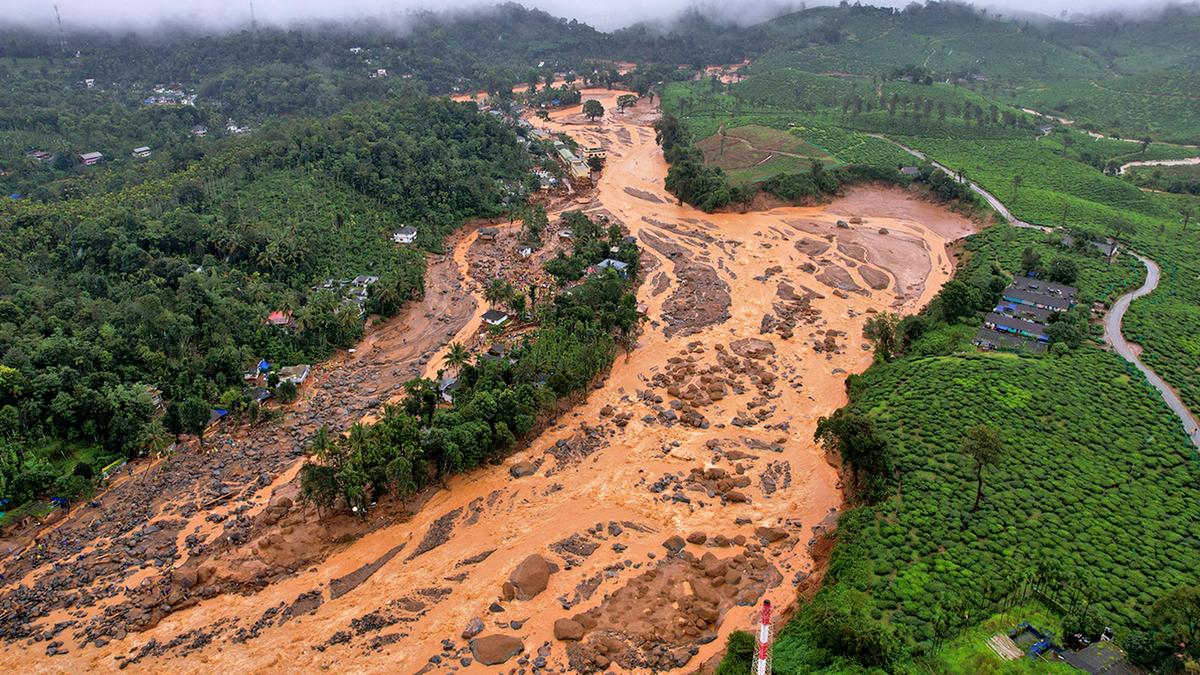
Deforestation has further aggravated the problem, an example would be what happened in Wayanad, Kerela.
Forests, which act as the planet’s lungs, absorbing carbon dioxide and releasing oxygen, are being cleared at an alarming rate for agriculture, urban development, and industrial use.
The loss of these vital carbon sinks has not only increased the concentration of greenhouse gases in the atmosphere but also destroyed habitats, leading to the extinction of countless species.
Our insatiable appetite for natural resources has also led to the degradation of the earth’s soils, water sources, and air quality.
The excessive use of fertilizers and pesticides in agriculture has polluted rivers and lakes, while industrial activities have contaminated the air we breathe.
The cumulative effect of these actions has created a toxic environment, threatening the health of both humans and wildlife.
Hence, now, we are paying the price for our past and present actions.
The climate crisis is no longer a distant threat; it is a reality that is already impacting millions of lives around the world – extreme weather events, such as hurricanes, wildfires, and droughts, are becoming more frequent and intense, displacing communities and causing widespread devastation.
Food and water insecurity is on the rise as agricultural systems struggle to adapt to changing climates, and entire ecosystems are collapsing under the weight of human-induced pressures.
The irony is that while we have the knowledge and technology to mitigate these impacts, our collective will to take meaningful action remains lacking.
The window of opportunity to reverse or even slow down the effects of climate change is closing rapidly and the consequences of inaction are clear: a world where future generations will inherit a planet vastly different from the one we once knew, with harsher living conditions, dwindling natural resources, and a diminished quality of life.
It is time we recognise the role humanity has played in creating this crisis and take immediate, decisive action to address it.
This means transitioning to renewable energy sources, protecting and restoring forests, adopting sustainable agricultural practices, and reducing our carbon footprint or else it is ultimately us who will be paying the price!

